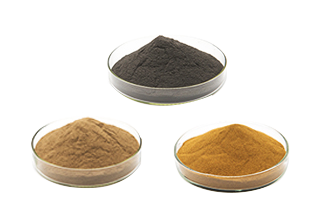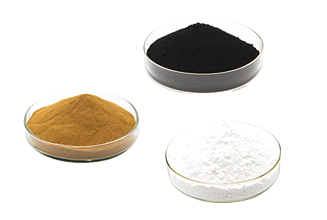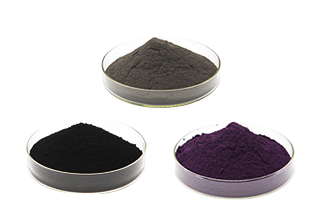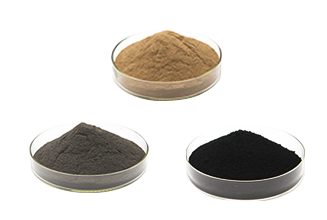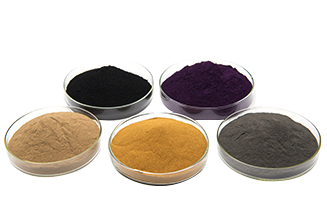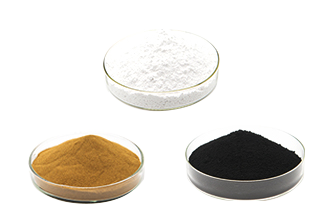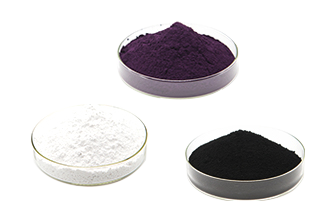Application of carbide ceramic materials in the field of nuclear reactors
1. Overview of the properties of nuclear carbide materials
The service environment of nuclear materials is very harsh and needs to withstand high temperature, high pressure, high corrosiveness and high radioactivity particle beam bombardment, which puts forward higher requirements for the selection of materials. Among them, the excellent characteristics of carbide ceramics provide more possibilities for the development of nuclear carbide ceramic materials.
2 Selection principles and performance requirements of nuclear materials
2.1 In terms of microstructure, carbide ceramic atoms are mainly combined by covalent bonds and ionic bonds, and the bond energy is relatively large. According to the button type, carbides can be divided into interstitial carbides, covalent carbides and ionic carbides. The former two are widely used in nuclear energy systems.
2.2 In terms of mechanical properties, carbide ceramic materials generally have high hardness, elastic modulus and compressive strength, and the coefficient of thermal expansion is also small. However, due to the inherent brittleness of carbide materials, toughening is also the only way for carbide ceramic materials to be applied.
2.3 In terms of oxidation resistance, the oxidation resistance of different carbide materials varies greatly. Although most carbide materials are oxidized at very high temperatures, some materials, such as SiC, will form a dense silicon dioxide protective film after being oxidized, showing excellent oxidation resistance.
2.4 In terms of radiation performance, most carbide materials show good radiation resistance. For example, the irradiated swelling of continuous SiC fiber reinforced SiC ceramic matrix composites is only about 0.1% to 0.2%.
2.5 In terms of neutron absorption performance, the neutron absorption cross-sections of different carbide materials are very different and can be used in different scenarios. If used for core neutron absorption materials, the neutron absorption cross-section is required to be large, and the chain reaction can be terminated faster under accident conditions.
3. Main carbide materials for nuclear energy
3.1. Silicon carbide
The covalent bond of SiC material is extremely strong, and it can still maintain high bonding strength at high temperature. It has good chemical and thermal stability, small high-temperature deformation, and low thermal expansion coefficient. It is very suitable for high-temperature environments. SiC is widely used in nuclear energy systems. The main applications include: as a coating layer for coating fuel particles, development of SiCf/SiC composite cladding, instead of zirconium alloy cladding, as a matrix material in gas-cooled fast reactors, and Used as a structural material in molten salt piles.
3.2 Zirconium carbide
Zirconium carbide (ZrC) is a refractory metal compound with a typical NaCl-type face-centered cubic structure with extremely high bond energy. Compared with SiC, ZrC has a higher melting point and a smaller thermal neutron absorption cross section. And it has better high-temperature mechanical properties and radiation resistance than SiC. At present, there are more and more researches on ZrC, and an important research direction is to use it as a fission product barrier for new-type coated fuel particles.
3.3 Boron carbide
B4C belongs to the rhombohedral crystal system, which can be regarded as a three-dimensional structure of a cubic unit cell lattice stretched in the diagonal direction of space, and boron icosahedrons are arranged on each vertex. B4C is an important neutron absorbing material, control rod material and shielding material in nuclear energy systems, with low density, high melting point and high hardness.
4 summary
In addition to the silicon carbide, zirconium carbide, and boron carbide described above, there are many other potential ultra-high temperature carbide materials, especially transition metal carbides, which are the material systems with the highest melting point among currently known compounds. This type of carbide includes titanium carbide (TiC), tantalum carbide (TaC) and niobium carbide (NbC).
At present, the application of carbide ceramics in nuclear energy systems has become more and more extensive. For example, SiC as a cladding material and B4C as a neutron absorbing material have been put into use, while UC fuel and ZrC as a candidate material for cladding are both under development. Some materials have completed the in-reactor irradiation test and will soon be used in commercial reactors.
The service environment of nuclear materials is very harsh and needs to withstand high temperature, high pressure, high corrosiveness and high radioactivity particle beam bombardment, which puts forward higher requirements for the selection of materials. Among them, the excellent characteristics of carbide ceramics provide more possibilities for the development of nuclear carbide ceramic materials.
2 Selection principles and performance requirements of nuclear materials
2.1 In terms of microstructure, carbide ceramic atoms are mainly combined by covalent bonds and ionic bonds, and the bond energy is relatively large. According to the button type, carbides can be divided into interstitial carbides, covalent carbides and ionic carbides. The former two are widely used in nuclear energy systems.
2.2 In terms of mechanical properties, carbide ceramic materials generally have high hardness, elastic modulus and compressive strength, and the coefficient of thermal expansion is also small. However, due to the inherent brittleness of carbide materials, toughening is also the only way for carbide ceramic materials to be applied.
2.3 In terms of oxidation resistance, the oxidation resistance of different carbide materials varies greatly. Although most carbide materials are oxidized at very high temperatures, some materials, such as SiC, will form a dense silicon dioxide protective film after being oxidized, showing excellent oxidation resistance.
2.4 In terms of radiation performance, most carbide materials show good radiation resistance. For example, the irradiated swelling of continuous SiC fiber reinforced SiC ceramic matrix composites is only about 0.1% to 0.2%.
2.5 In terms of neutron absorption performance, the neutron absorption cross-sections of different carbide materials are very different and can be used in different scenarios. If used for core neutron absorption materials, the neutron absorption cross-section is required to be large, and the chain reaction can be terminated faster under accident conditions.
3. Main carbide materials for nuclear energy
3.1. Silicon carbide
The covalent bond of SiC material is extremely strong, and it can still maintain high bonding strength at high temperature. It has good chemical and thermal stability, small high-temperature deformation, and low thermal expansion coefficient. It is very suitable for high-temperature environments. SiC is widely used in nuclear energy systems. The main applications include: as a coating layer for coating fuel particles, development of SiCf/SiC composite cladding, instead of zirconium alloy cladding, as a matrix material in gas-cooled fast reactors, and Used as a structural material in molten salt piles.
3.2 Zirconium carbide
Zirconium carbide (ZrC) is a refractory metal compound with a typical NaCl-type face-centered cubic structure with extremely high bond energy. Compared with SiC, ZrC has a higher melting point and a smaller thermal neutron absorption cross section. And it has better high-temperature mechanical properties and radiation resistance than SiC. At present, there are more and more researches on ZrC, and an important research direction is to use it as a fission product barrier for new-type coated fuel particles.
3.3 Boron carbide
B4C belongs to the rhombohedral crystal system, which can be regarded as a three-dimensional structure of a cubic unit cell lattice stretched in the diagonal direction of space, and boron icosahedrons are arranged on each vertex. B4C is an important neutron absorbing material, control rod material and shielding material in nuclear energy systems, with low density, high melting point and high hardness.
4 summary
In addition to the silicon carbide, zirconium carbide, and boron carbide described above, there are many other potential ultra-high temperature carbide materials, especially transition metal carbides, which are the material systems with the highest melting point among currently known compounds. This type of carbide includes titanium carbide (TiC), tantalum carbide (TaC) and niobium carbide (NbC).
At present, the application of carbide ceramics in nuclear energy systems has become more and more extensive. For example, SiC as a cladding material and B4C as a neutron absorbing material have been put into use, while UC fuel and ZrC as a candidate material for cladding are both under development. Some materials have completed the in-reactor irradiation test and will soon be used in commercial reactors.
related news
-
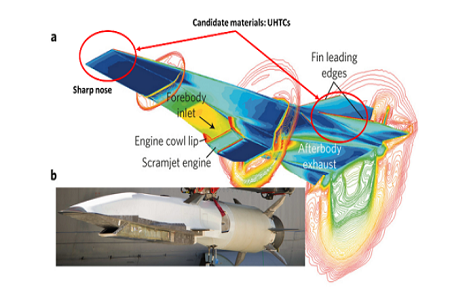 Oct 25, 2021Comparison of different sintering methods of ZrC (zirconium carbide) ceramics and analysis of their application performance
Oct 25, 2021Comparison of different sintering methods of ZrC (zirconium carbide) ceramics and analysis of their application performance -
(1).png) Oct 08, 2021Ultra-high temperature ceramics help high-speed aircraft withstand the high temperature of 2000 ℃!
Oct 08, 2021Ultra-high temperature ceramics help high-speed aircraft withstand the high temperature of 2000 ℃! -
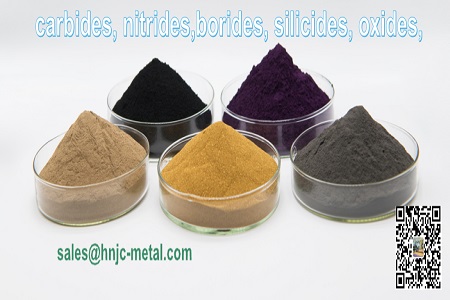 Oct 28, 2022Carbide ultra-high temperature ceramics mainly include zirconium carbide (ZrC), tantalum carbide (TaC) and hafnium carbide (HfC),
Oct 28, 2022Carbide ultra-high temperature ceramics mainly include zirconium carbide (ZrC), tantalum carbide (TaC) and hafnium carbide (HfC), -
Mar 29, 2022Preparation method of titanium diboride

